Performance study of jute-epoxy composites/sandwiches under normal ballistic impact
2020-07-02SngmeshRjoleRvishnkrKulkrni
Sngmesh Rjole , K.S. Rvishnkr , S.M. Kulkrni
a Department of Mechanical Engineering, National Institute of Technology Karnataka, Surathkal, Mangalore 575025, India
b Department of Metallurgical and Materials Engineering, National Institute of Technology Karnataka, Surathkal, Mangalore 575025, India
Keywords:Energy absorption Composites Polymer composites Ballistic impact High velocity impact
ABSTRACT This study is undertaken to explore the use of natural fiber Jute-epoxy (JE), Jute-epoxy-rubber (JRE)sandwich composite for ballistic energy absorption. Energy absorbed and residual velocities for these composites are evaluated analytically and through Finite Element Analysis (FEA).FE analysis of JE plates is carried out for different thicknesses(3,5,10 and 15 mm).JE plates and JRE sandwiches having the same thickness (15 mm) are fabricated and tested to measure residual velocity and energy absorbed. The analytical results are found to agree well with the results of FE analysis with a maximum error of 9%.The study on JE composite plate reveals that thickness influences the energy absorption.Experimental and FE analysis study showed that JRE sandwiches have better energy absorption than JE plates. Energy absorption of a JRE sandwich is about 71% greater than JE plates. Damages obtained from FEA and testing are in good agreement. SEM analysis confirms composites failed by fiber rupture and fragmentation.
1. Introduction
Protective shields made up of mud, cement, wood, and metals,etc. have been used since ancient times to protect mankind from attacks of high-velocity projectiles [1]. In recent times, these are replaced by polymers, ceramics, and their composites as they are light and can be easily transported and have excellent resistance to corrosion. For withstanding high-velocity bullet, multilayer materials were generally adopted,which provide high energy absorption[2]. Such materials can be used to fabricate composites by incorporating fibers/particulate matter in the compliant matrix [3].
Of late, researchers have begun to explore the possibility of using composites from natural materials for ballistic applications[4].Natural fibers such as jute,being biodegradable,possess better properties,economical and available in abundance.Hence,they are emerging as the substitutes for conventional synthetic fibers in composites [5,6]. Epoxies and polyesters are generally used as matrix materials of which jute/epoxy composites possess better properties and find wider usage [7]. Composites with jute fibers and coconut shell powder in the epoxy matrix have been found to possess a significant amount of energy absorption [8]. Wambua et al. have investigated the performance of polypropylene reinforced with jute sandwiched with mild steel sheets. The sandwiched composites (steel/composite) performed better than the neat steel or jute composites[4].Fernanda Santos da Luz et al.have also studied jute fabric composites and have found them more efficient than aramid fabric composites under the ballistic performance test[9].Natural rubber as a matrix material possesses good toughness,low cost,biodegradability and is available in abundance.It is also found to be very useful in ballistic impact applications[10],but not attempted combined with jute as reinforcement.
The ballistic impact is the study that emphasizes the behavior of material failure caused by the impact of projectile/bullets. This is particularly important to protect humans as well as machinery in nuclear and military applications. Impact behavior of composites depends on size, shape, mass, impact velocity and material of projectile [11,12], as well as geometry, mass, composition and support condition of the target[13].
Analytical models for ballistic impact, based on different theories such as hydrodynamic and wave theory are developed to study the behavior of the composites [14-19]. Numerical analysis using Finite Element Analysis (FEA) is also explored [20-24] for a ballistic study of composites. Through validation, FEA methods have been found to predict the behavior,quite realistically[25-28].
Despite abundant work, it is clear from the available literature that,research has been hardly focusing on modeling and testing the ballistic performance of composites, made from natural materials.Thus, the present work is undertaken to study Jute-epoxy composite,jute-epoxy,rubber sandwiches under a high-velocity impact of projectiles.Analysis of ballistic performance of above composites has been carried out using analytical, FEM and experimental approaches. The study has been carried out for three different velocities.Inlet and exit damages obtained from FEA and experiment are also analyzed to understand the failure modes.
2. Methodology
Composite plate and sandwich made of Jute-Epoxy and rubber core are proposed for energy absorption under ballistic impact whose schematic configuration is shown in Fig. 1(a) for JE and Fig.1(b)for JRE sandwich.Raw materials used are woven jute fabric,naturally cured rubber sheets,Epoxy(Lapox L-12)and hardener(K-6).Epoxy and hardener mixed in the proportion of 10:1 for the best results as suggested by the supplier. Woven jute mat is dipped in this mixture as a first step in preparing the composite. These impregnated mats are placed in the mold(300 mm×300 mm×15 mm)as shown in Fig.1(c)to achieve the required thickness. After attaining the necessary thickness, the mold is immediately placed under a compression molding machine as shown in Fig.1(d),with a pressure of 25 kg/cm2for 24 h to cure.After curing,the samples are taken out(Fig.1(e))and are subjected to ballistic impact testing. With a similar procedure, sandwich composite also prepared with rubber sheets as core and jute-epoxy layers as skin as shown in Fig.1(f)
2.1. Analysis of composites for ballistic impact
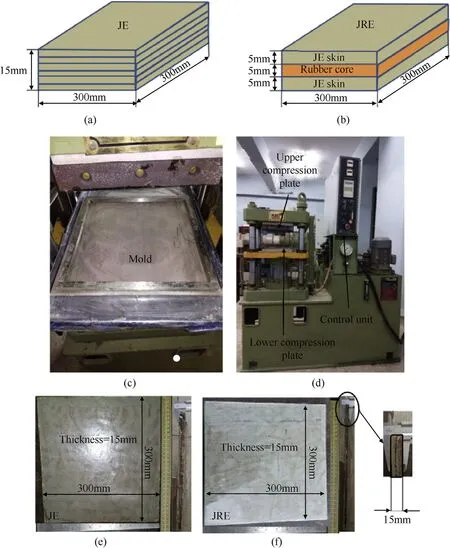
Fig.1. (a) Schematic of JE and (b) JRE sandwich (c) Mold used for specimen preparation (d) Compression molding machine, (e) & (f) Compression molded JE, JRE samples.
The analytical model developed for finding residual velocity(Vr)of a plate subjected to normal impact by a rigid projectile is represented by Eq.(1)[27,29].This model considers a target plate to be thin enough to form a plug of fractured material and ejected[27,29].

Where V= Velocity of Impactor (m/s).
Vxn= Minimum perforation velocity (m/s)

And
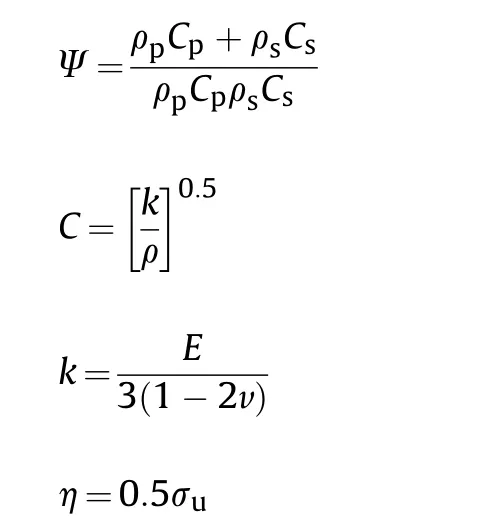
Where, Cpand Cs- Sonic velocity within the projectile and plate(m/s), ρpand ρs-Density of projectile and plate (kg/m3), T- Thickness of the plate = 0.003 (m), L- Length of the projectile = 0.051(m), Ω = Ratio of plate and projectile material densities, (dimensionless), D- Plug diameter of plate = 0.00762 (m), d- Diameter of the projectile=0.00762(m),ɳ-Dynamic shear strength of the plate material (Pa), σu-82 × 106(Pa). k-Bulk Modulus (Pa)- calculated form using values from Table 1.
From the residual velocity,energy absorbed by the material can be calculated using Eq. (2) [10,25]:

Where,Eab=Energy absorbed by the specimen(J),mp=mass of the projectile(kg),Vi=impact velocity or input or initial velocity(m/s),Vr= residual velocity (m/s).
Residual velocity and energy absorbed are computed from Eqs.(1) and (2) for composite target plates, using the data given in Table 1.
2.2. Finite Element Analysis of composites for ballistic impact
FE analysis carried out for composite plates is as explained below:
Composite plate (Kevlar-polyester, JE, and JRE) of 100 mm × 100 mm with different thickness is considered for FE analysis. FE model of the composite plates is developed using commercial FE software ABAQUS 6.14/Explicit. Composite target plate is considered as deformable whereas projectile/bullet is considered to be rigid. A cylindro-spherical projectile of 7.62 mm diameter, weighing 5 g is considered for analysis to represent the bullet/projectile of a self-loading rifle (Fig. 2).
Target plate and the projectile geometries are created, discretized, following which material properties are assigned.Conversed meshing is adopted after mesh sensitivity study. The projectile is made to impact the target normally.
Meshed projectile and target plate with boundary conditions are shown in Fig.2(a)and(b).Details of element type and mesh density are furnished in Table 2.
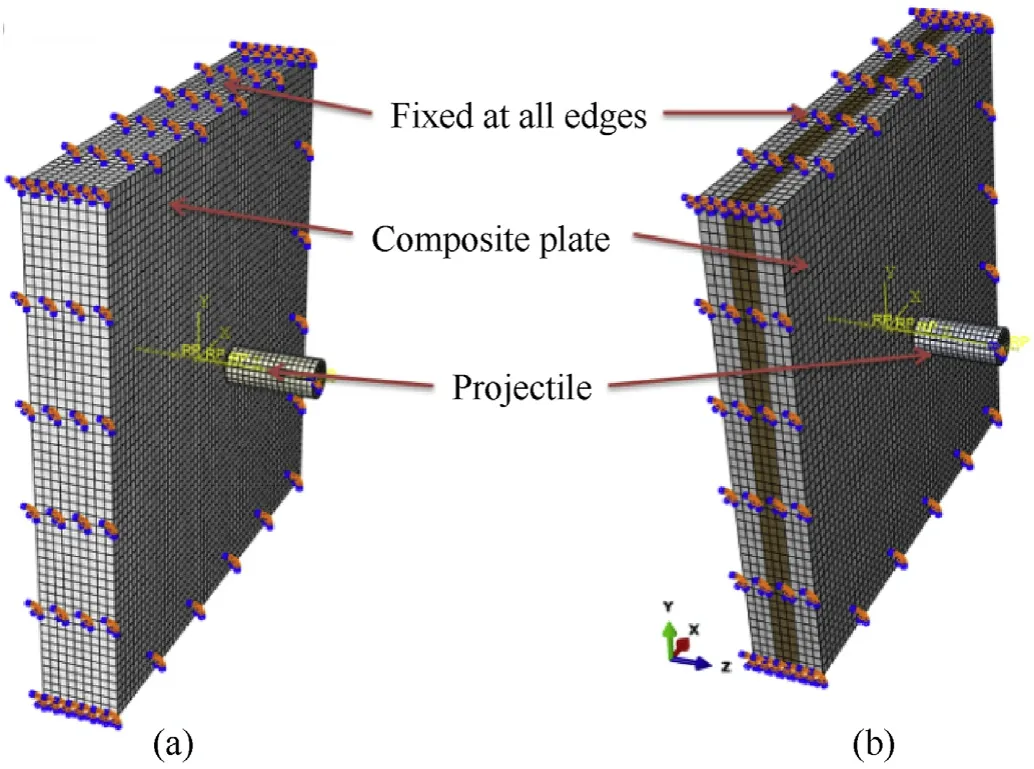
Fig. 2. (a) FE analysis of JE (b) JRE sandwich composite with boundary conditions imposed.

Table 1 Properties of composite target plates [25,30,31].

Table 2 Details of the mesh for composite plate and projectile.
FE analysis of composite is carried out at different velocities 150 m/s,250 m/s and 350 m/s and different thicknesses for JE plates of 3, 5,10, and 15 mm. Sandwich of JE with rubber core of 5 mm thickness is shown in Fig. 1(b) whose analysis was carried out,similar to other plates. Rubber material properties considered are given in Table 1.Kevlar-polyester(KP)FE analysis is carried out for the same thicknesses and velocity as that of literature for validation study [25,30,32].
2.3. Experimental testing of composites for ballistic impact
Ballistic impact testing of JE and JRE composite is carried out as shown in Fig. 3. Bullets are fired on to the fixed samples from a distance of 5 m,and the input and residual velocities are recorded using two chronographs as shown in the setup below.
3. Results and discussion
Residual velocity computed from FE analysis for KP target plate finds very good agreement with those obtained in an earlier study[25] are given in Table 3. Thus our FE model is deemed to be validated.On similar lines, JE composites are analyzed.
Residual velocity and energy absorbed are computed from both analytical, and FE models for JE plates of thicknesses 3 mm and 5 mm are furnished in Table 4. The damages occuered on the surface of the composite plate are presented in the Table 5.
It is observed from the above Table 4 that, JE plates of higher thickness exhibit lower residual velocities and high energy absorption. The results of FE analysis are in close proximity with analytical values of residual velocity and energy absorbed. The maximum error in residual velocity is about 9%, and thus the FE model is deemed to be validated for JE composites. Hence, this approach is extended to JE plates of different thicknesses to evaluate the ballistic properties.Residual velocity and energy absorbed obtained for these are plotted in Fig. 4(a) and (b).
It is observed from Fig. 4(a) that the linear relation exists between impact and residual velocity. Fig. 4(b) shows that higher energy absorption is recorded for thicker plates. An increase in energy absorption from 3 to 15 mm thick plates is about 80%.Thus,thicker plates of JE could be used for bulletproofing.
FEA results of Jute-Epoxy-rubber sandwich and JE plates of equal thicknesses (15 mm) are provided in Fig. 5(a) and (b). It is seen from these plots that sandwich display significantly higher energy absorption and low residual velocities. This behavior could be analyzed from the distinctive fractures simulated in FE for JE plates and JRE sandwiches shown in Fig. 6. Fig. 6(a) maps the projectile interaction with a JE plate at time 0 s,150 ms and 300 ms from the start of impact.Complete penetration of projectile occurs,and the JE plate fails with a clear hole as shown. Predominantly, a brittle fracture of JE plates could be observed.
Fig. 6(b) represents the interaction of a projectile with JRE sandwich, where elastic yielding of the rubber core before tearing could be visualized from the extension of the mesh in the direction of impact. Thus, a dominant ductile failure of rubber, which encourages larger energy absorption, could be seen.
Fig. 7 provide the results of FEA and experimental testing of JE plate and JRE sandwiches. It could be observed that the results of FEA and Experiment (EXP) agree well with a maximum error of about 8%. In both cases, the JRE sandwich is absorbing 71% more energy as compared to JE plates.

Fig. 3. Experimental ballistic impact field test setup.

Table 3 Residual velocities of KP obtained by FE approaches.

Table 4 Residual velocities of JE obtained by Analytical and FE approaches.

Table 5 Damage areas of JE and JRE samples.
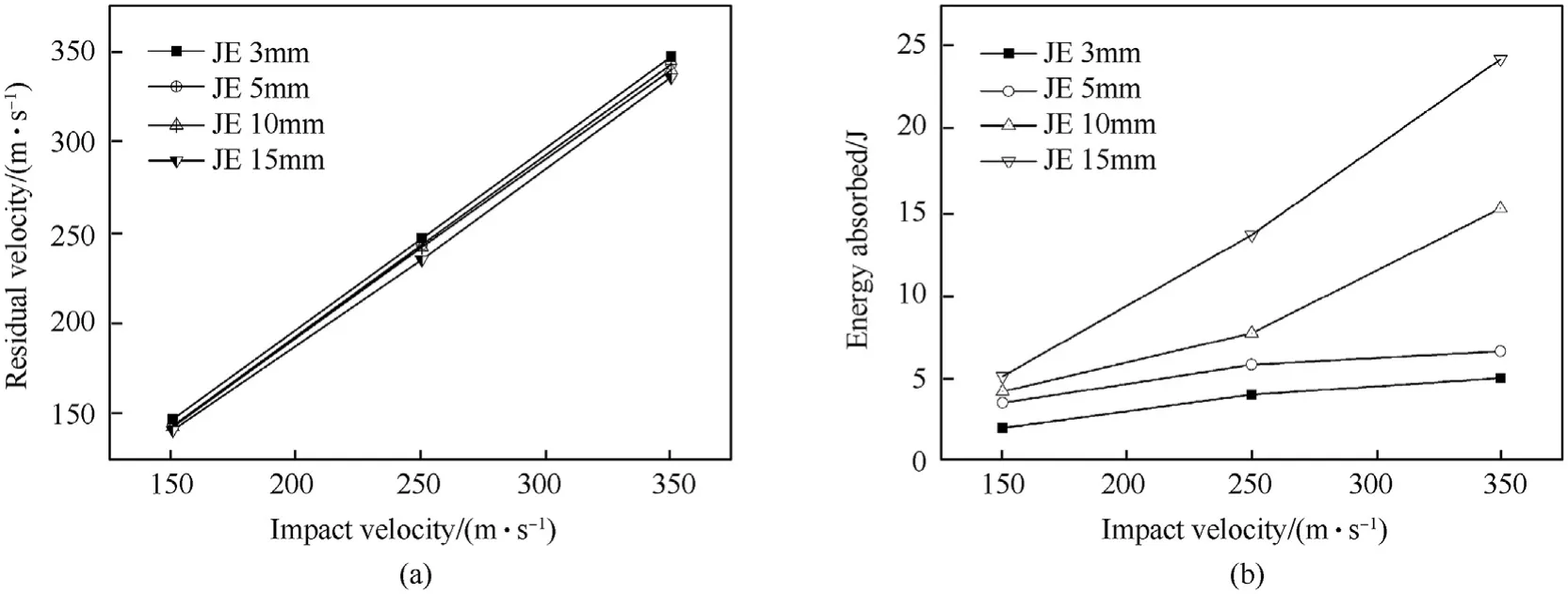
Fig. 4. Plots showing (a) Residual velocity and (b) Energy absorption for different impact velocity on JE laminate with projectile.
Damages observed in FEA and experimentally tested samples of JE and JRE are presented in Fig. 8. Part (a) of the figure shows the entry and exit damages observed in JE plates.Damages on the entry side are smaller compared to the exit side.This could be due to the compressive stresses on the entry side and tensile stresses at the exit side leading to an increase in the extent of the damage.Distinctive through holes formed due to brittle fracture leading to the ejection of material in plug form can be noticed from Fig.8(a)in case of JE composites.Similar damage observed in FEA contours can be seen in Fig. 8(a).
In case of damages in JRE sandwich (Fig. 8(b)), features of skin spalling could be seen along with elastic deformation of rubber core before tearing and final fracture. Small closing holes could be observed at the exit, supporting the above mechanism.
A ratio of areas at entry damage(Af)to exit damage(Ab)[33]was devised to assess the relationship of damages. This ratio (Af/Ab) is found to be 0.5 in FEA and 0.54 in physical measurement for JE plates.
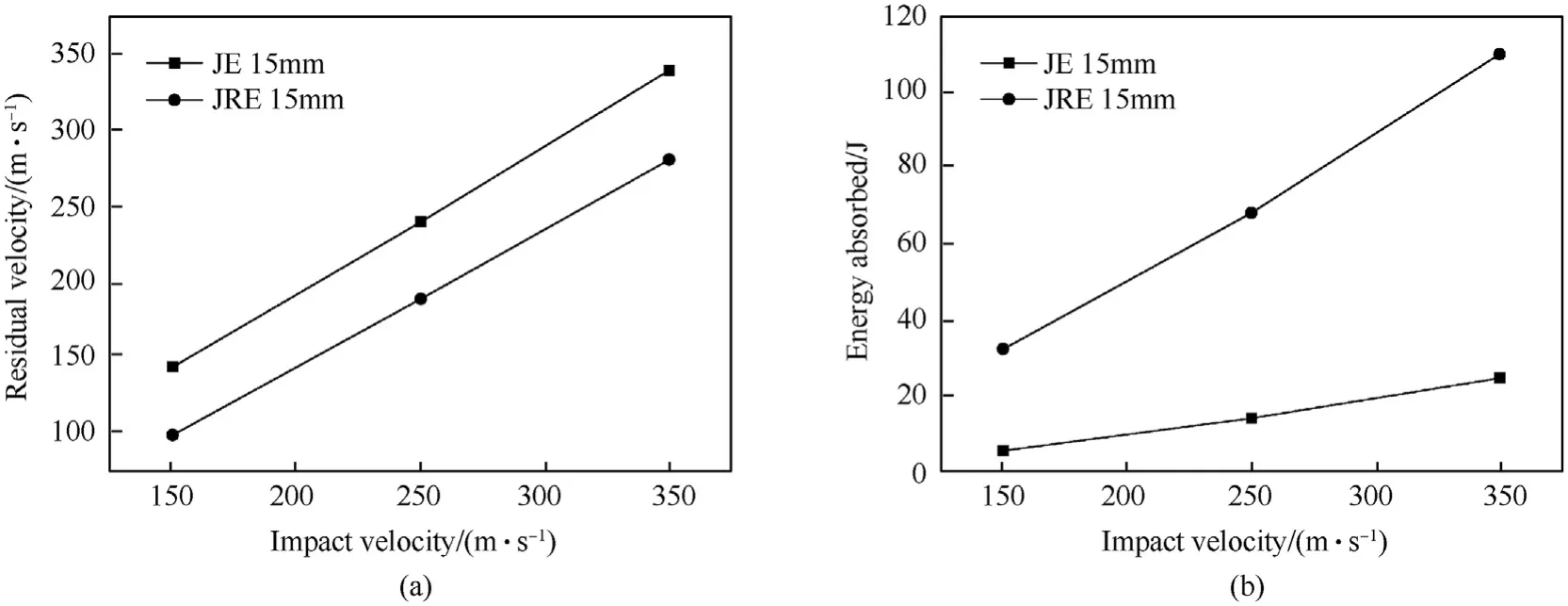
Fig. 5. Plots showing (a) Residual velocity and (b) Energy absorption for different impact velocity on JE and JRE sandwich.
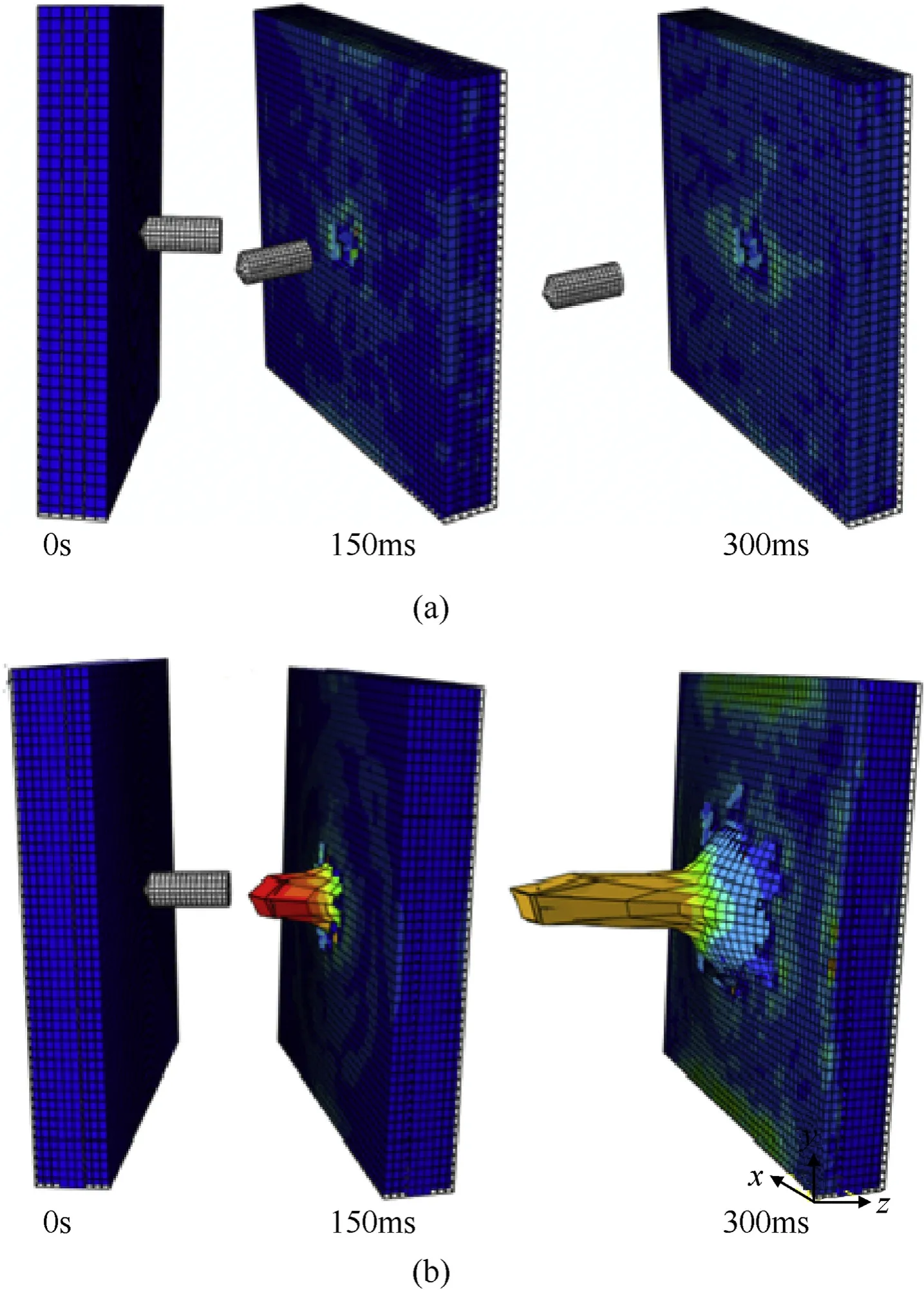
Fig. 6. Figures showing fracture observed at velocity of 350 m/s in (a) JE Plate for and (b) JRE sandwich both of 15 mm thick.
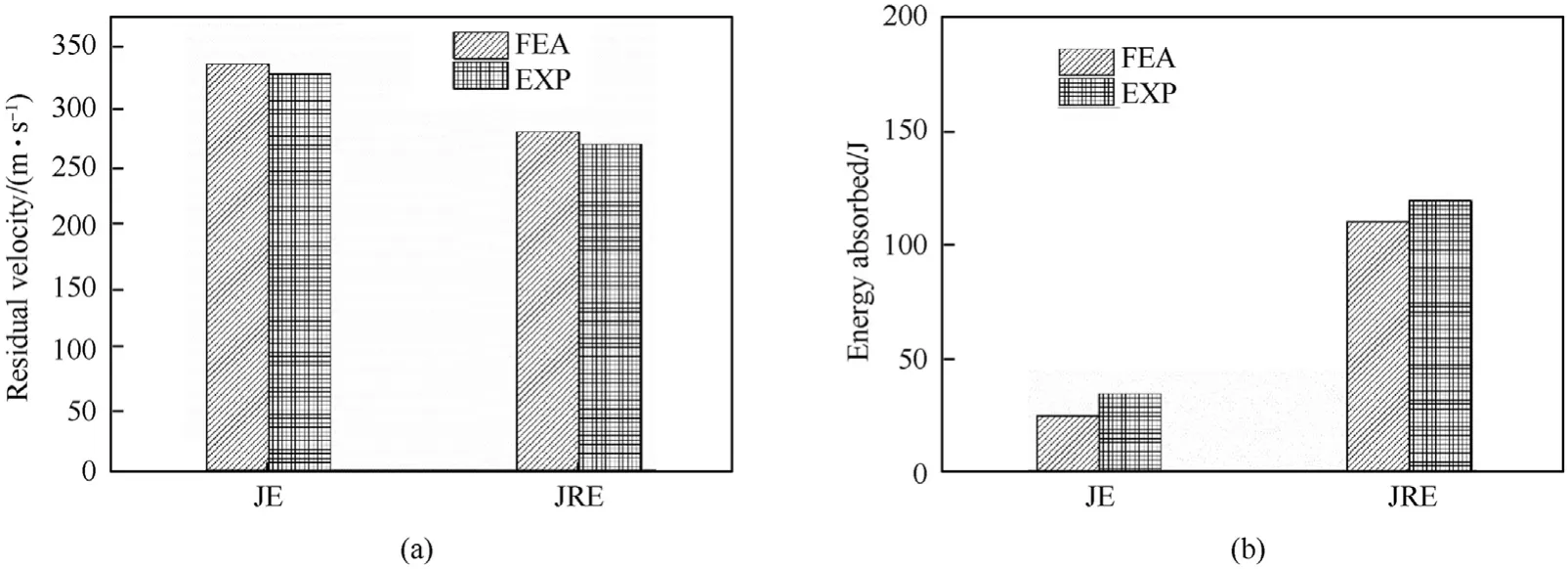
Fig. 7. (a) Residual velocity (b) Energy absorbed for 15 mm composite plate impacted with 350 m/s velocity.
Damage area ratio in case of JRE sandwich is 0.61 from FEA and 0.63 from the physical measurement.Thus,the appropriateness of FEA for analyzing the normal impact of a projectile on a composite/sandwich plates could be highlighted in the present work.
Fig.9 shows the SEM Fractography illustrating the mechanism of fragments JRE sandwich after impact. Fig. 9(a) shows the fracture region for after impact the jute fiber from the projectile impact suffered by JE composite. Where jute fiber failed completely by mechanical fiber rupture and fiber breaking due to large tensile and compressive forces of the bullet impact.Fiber stretching also could be seen in from Fig. 9(d). Fragmentation of JE composite happens due to large forces applied during bullet impact which can be clearly seen from Fig. 9(b), (c), and (d).
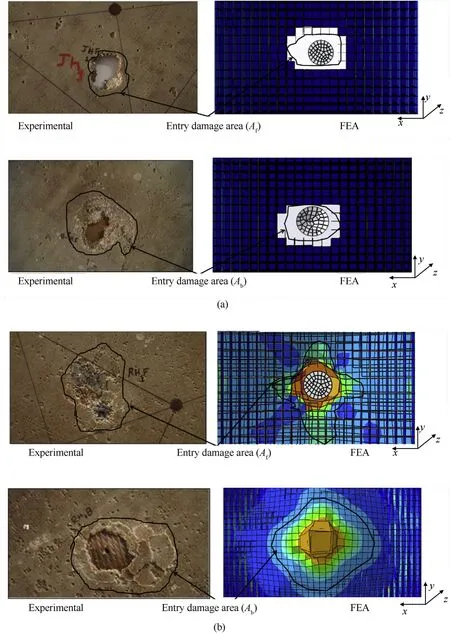
Fig. 8. Composite after firing (a) JE Entry and Exit damaged surfaces (b) JRE Entry and Exit damage surfaces at velocity of impact 350 m/s.
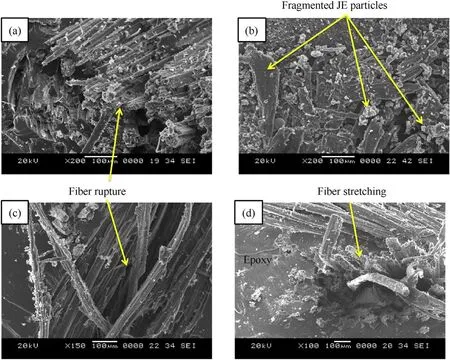
Fig. 9. Fracture region of a JE composite caused fragments after the ballistic impact.
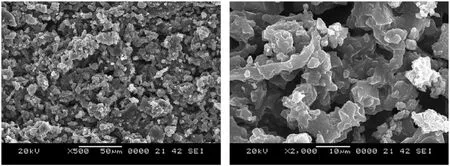
Fig.10. Fracture surface of Natural rubber after the ballistic test.
Fig. 10 representing failure of rubber material from the JRE composite. Rubber material underwent wear due to impact of the bullet, as bullet punches and creates a small hole on rubber. After making a hole,it rubs against the rubber material and creates rough surfaces.
4. Conclusion
Analytical computed residual velocity and energy absorbed for JE composites are compared with FE analysis,and they are found to be agreeing well with a maximum error of 9%. FE results of KP composites compared well with the results of an earlier study. FE analysis extended for JE plates revealed that an increase in the thickness increases the energy absorption. On increasing the thickness from 3 to 15 mm the energy absorption increased by 80%.
Reduction in residual velocity of about 16% and increase in the energy absorbed of about 71%could be recorded for JRE sandwiches as compared to JE plates of same thicknesses (15 mm). Elastic deformation of rubber before tearing could have contributed to this significant increase in energy absorption.
Results from an experiment testing show a close agreement with FE analysis.The damages in JE and JRE,obtained from FEA and experimental approaches are similar,and the ratio of damage areas also exhibit good agreement. The damages in JE plate are characterized by clear holes with plug form ejection, indicating brittle fracture while damages in JRE sandwich contained features indicating brittle failure of skin and ductile failure of rubber core. JRE sandwiches could be promising materials for low-cost protective structures for bulletproofing.
Acknowledgment
The authors would like to thank Suraj Ravindra research associate, Nanyang Technological University, Singapore and Yukeshkumar Kamal analyst EASi Engineering, Allegis group Chennai for extended support for simulation.
杂志排行
Defence Technology的其它文章
- Analysis of sliding electric contact characteristics in augmented railgun based on the combination of contact resistance and sliding friction coefficient
- Aerodynamics analysis of a hypersonic electromagnetic gun launched projectile
- Synergistic effect of hybrid Himalayan Nettle/Bauhinia-vahlii fibers on physico-mechanical and sliding wear properties of epoxy composites
- Study on dynamic response of multi-degree-of-freedom explosion vessel system under impact load
- An investigation on anti-impact and penetration performance of basalt fiber composites with different weave and lay-up modes
- Modeling and simulation of muzzle flow field of railgun with metal vapor and arc
